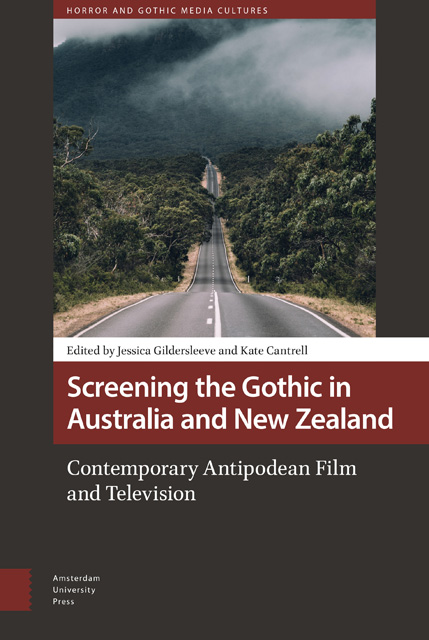10 - Mapping Settler Gothic : Noir and the Shameful Histories of the Pākehā Middle Class in The Bad Seed
Published online by Cambridge University Press: 24 November 2022
Summary
Abstract
This chapter addresses the ways in which the New Zealand television series The Bad Seed (2019) narrates intersections between settler-colonial identity and social class. It makes the case that The Bad Seed sits within a line of storytelling in New Zealand settler Gothic which serves to secure innocence by presenting the relatively privileged Pākehā family as ‘middling’, vulnerable and at risk. The chapter progresses through an analysis of traumatogenic spaces, culminating at the isolated farmstead locale that is so generative to the settler Gothic imaginary. Ultimately, The Bad Seed employs mixed and hybrid genres to tell a story of Pākehā middle-class self-exculpation.
Keywords: New Zealand; social class; settler colonialism; settler Gothic; Pākehā identity; noir
Timothy Jones opens his entry on New Zealand Gothic for the Wiley- Blackwell Encyclopedia of the Gothic with the rather alarming statement that ‘the most distinct feature of the New Zealand Gothic might be the critical and popular difficulty in defining what the category describes, and which texts belong within it’ (468). Some of this diffidence can be attributed to New Zealand's relatively small and, at times, insular body of cultural theory. There is, as yet, no agreed canon of Gothic texts, no authoritative monograph on the subject, and some hesitation as to whether it is even a valuable way to frame the kinds of work that are produced in Aotearoa. During an influential period of New Zealand's settler cultural history in the mid twentieth century, Gothic romance and the supernatural were specifically discounted as remnants of Victorian and Edwardian sensibilities. As Jones points out, creative artists of the time were swayed by international trends which disparaged popular genres and promoted pared-down realism as a favoured form (469). A properly New Zealand idiom would portray reality as disenchanted, confined to a single, flat, materialist plane of existence.
Far from stamping out the Gothic, depictions of stagnant settler life across towns and rural areas only served to emphasize the ways in which psycho-familial disturbances are embedded in the structures of settler colonialism. As Lorenzo Veracini establishes in his book The Settler Colonial Present (2015), settler identity relies on a series of assertions of negative differentiation: settlers are not Indigenous, not violent and usurping colonizers, not more recently arrived migrants, not bound by social class in the manner of the older, less adaptive societies that settlers left behind.
- Type
- Chapter
- Information
- Screening the Gothic in Australia and New ZealandContemporary Antipodean Film and Television, pp. 195 - 212Publisher: Amsterdam University PressPrint publication year: 2022

